How to grow Buddleja
There are around 100 species of buddleja (usually shrubs, though sometimes trees and climbers), found growing wild throughout Asia, Africa, and North and South America. A handful of these are cultivated by gardeners, prized for their easy-going nature and long-lasting profusion of pretty flowers.
You may sometimes see the alternative spelling of ‘buddleia’ used. The hugely popular Buddleja davidii is commonly referred to as the butterfly bush.
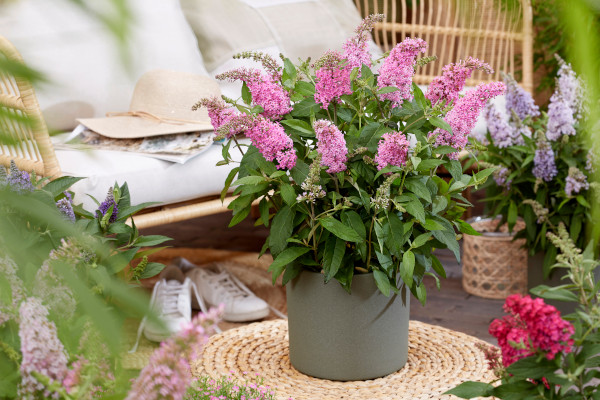
Key Information
Position
Soil Conditions
Hardiness

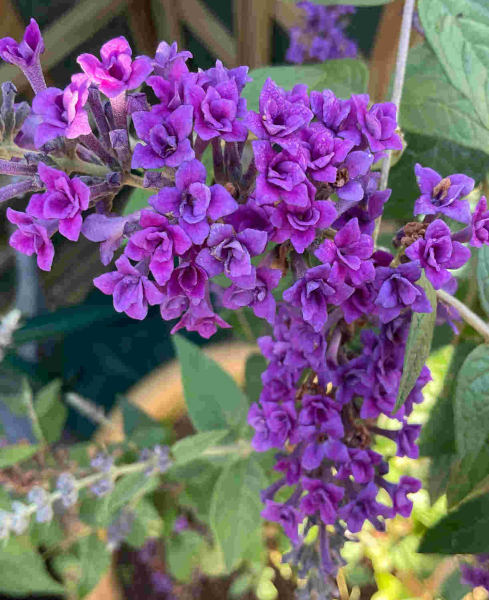
Where & when to plant Buddleja
For best results, plant in autumn or spring. An autumn planting can be done by those gardening in mild conditions (and broadly speaking, this is the southern half of the UK). For those liable to cold winters, it is best to wait until spring (generally the northern half of the UK). Planting can also be carried out in summer, though be prepared to water regularly.
Buddleja will grow almost anywhere as long as the soil is not waterlogged (think of all the times you have seen it popping up along railway tracks or colonising rubble-filled wasteland), though for best results (i.e., optimum flowering and most attractive shape) give it a sunny spot with shelter from strong winds. Make sure you read the eventual height and spread to ensure it has room to grow. Most buddlejas will be kept in check with a hard annual prune (see ‘Pruning and Deadheading’ section below), though their long, arching shoots still look best with space to grow freely. For smaller spaces or containers, go for dwarf versions such as the Flutterby Petite, Buzz, Butterfly Candy, or Bloomtastic Dreaming series, B. x pikei ‘Unique’, or B. High Five Purple.
Buddleja fits beautifully into a classic cottage garden-style scheme. Its long-lasting, nectar-rich flowers also have high pollinator value, so a wildlife or nature garden is another ideal setting.
How to plant Buddleja
- For planting in the ground, dig the soil area removing any large stones and weeds and breaking up any lumps. Mix in some organic matter such as garden compost. If your soil is heavy clay, now is also the time to add a generous helping of horticultural grit. Rake level and firm with your heels. Rake level again.
- Water plants well and allow to drain before planting.
- A good tip is to dig a hole twice the size of the root-ball. Fill with water and allow to drain before placing in the plant.
- Place the plant in the hole, ensuring the top of the root ball sits level with the surface of the soil. Too low and the plant may rot, too high and the roots can dry out.
- Backfill with soil and firm in gently with your foot.
- Soak well with water.
- Mulch around the base with well-rotted organic matter.
- For planting in containers, first choose an appropriately sized pot. The best practice is to start just a few centimetres larger than the rootball and increase in size every year or two. Eventually you can expect your buddleja to need a large container with an approximate width of 60cm. Always ensure there are plenty of drainage holes in the bottom.
- If you are using a large or heavy pot, it can be a good idea to fill and plant it in situ to save yourself the trouble of moving once full.
- Use a good quality potting compost with plenty of horticultural grit mixed in, and, if not already present in the compost (check the description on the bag) some slow-release fertiliser granules.
- Start by partially filling the pot with compost; enough so that when placed on it the upper surface of the root ball is about 3cm lower than the top of the pot.
- Infill all the space surrounding the root ball with compost, firming down with your fingers then adding a little more so the plant is held tight.
- Pick up the pot (if you can!) and lightly tap on the potting bench or ground a few times to help further settle the compost around the plant.
- Soak well with water.
- A mulch with horticultural grit will look attractive and help to prevent a ‘cap’ or crust forming on the top of the compost (something container plants can suffer due to the artificial nature of their watering).
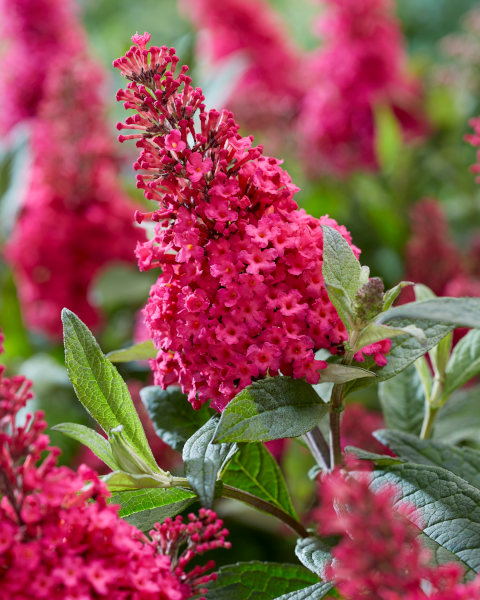
What to plant with Buddleja
In a traditional, cottage garden-style garden, try underplanting this shrub with long-blooming favourites such as geranium, erigeron, and nepeta. Warm-toned plants can also work well for picking out the orange eye of the flowers – think crocosmia or geum.
For a wildlife or nature garden, equally nectar-rich, sun-loving companions may include muscari and pulmonaria for early blooms; eryngium, verbena, and lavender for mid-season; and echinacea, aster, and hedera for later in the year. Make sure you grow a few night-flowering plants for moths too – cestrum, jasmine, and honeysuckle are all good choices.
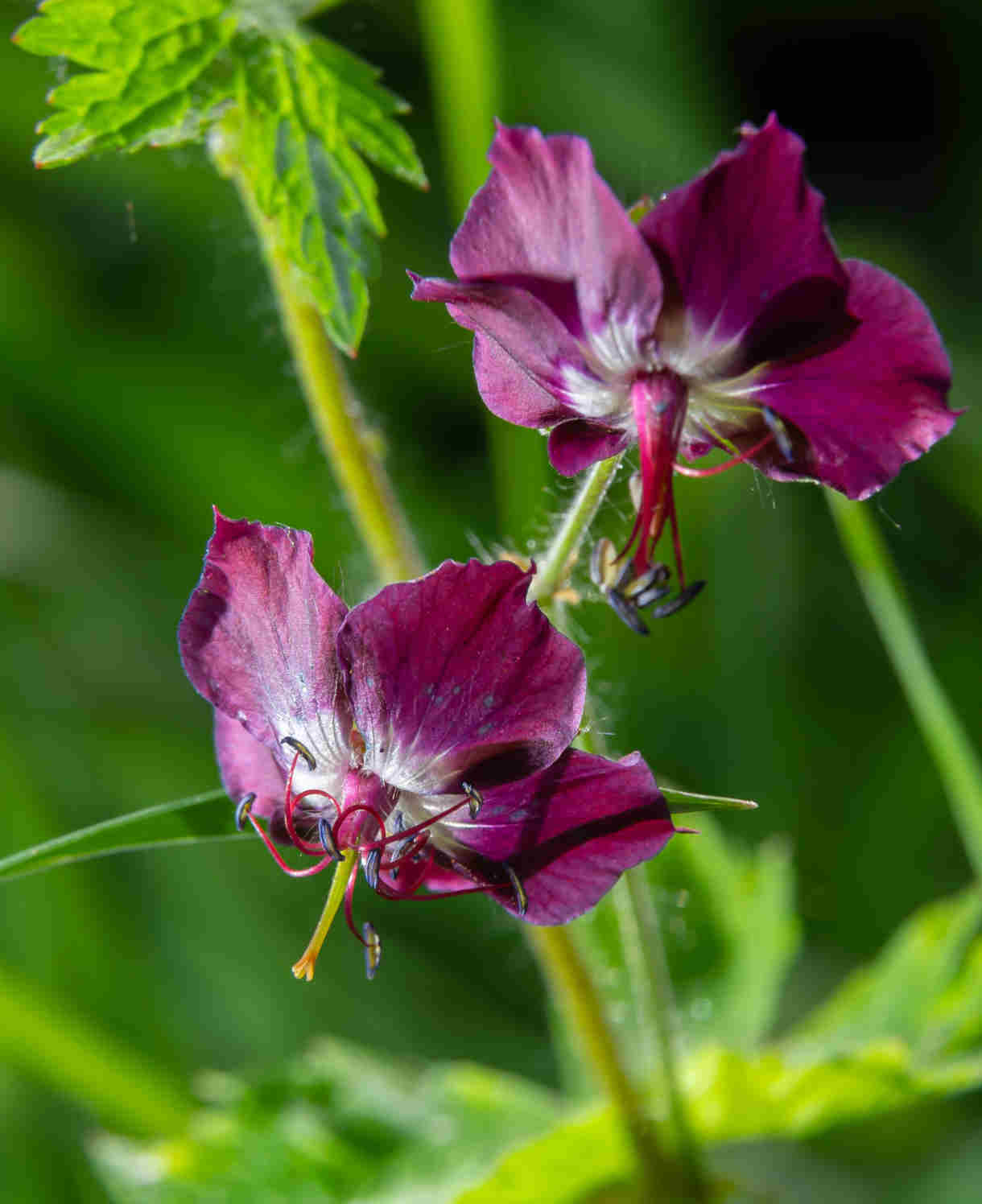

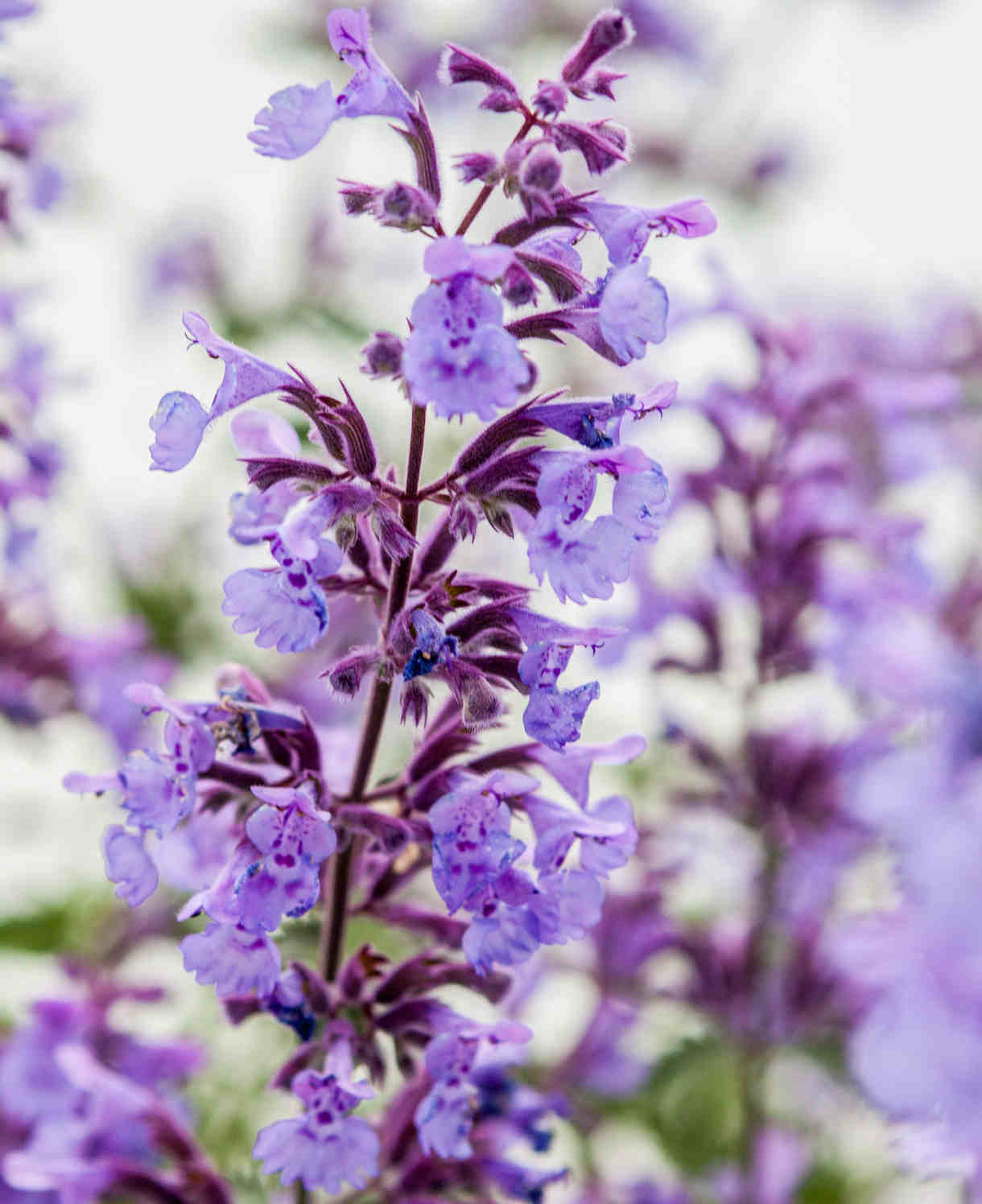
How to care for Buddleja
Pruning and Deadheading
Most buddlejas fall into Pruning Group 6. This means they flower on the current year’s growth and should be pruned in early to mid-spring. Cut back last year’s flowering stems to within one or two buds of the older framework, and remove any dead, diseased, damaged, or badly placed growth. Regular pruning is particularly important for larger species and cultivars, which left unchecked can become out of control.
The exception is B. globosa, which falls into Pruning Group 2. Blooming on the previous year’s growth, it should be pruned straight after flowering. Cut back any flowered shoots to a strong bud, and remove any dead, diseased, damaged, or badly placed stems too.
Try to avoid pruning during winter as this can result in frost damage.
Overgrown plants in need of renovation can be cut back hard in March, and we recommend doing this in two stages to reduce stress to the plant. This means half of the plant one year and the other half the following year.
All buddlejas can be deadheaded throughout the flowering period to encourage the formation of more flowering stems. Remove spent flowers at the end of the season if you wish to prevent self-seeding (though this is not an issue for sterile hybrids such as B. x pikei).
Watering
New plantings require more regular watering than established plants. During the first growing season in the ground, a good soaking every couple of weeks should ensure long-term success (aiming for consistently moist, but not soggy soil). After this, buddlejas tend to be self-sufficient. An annual mulch will help lock moisture into the soil (see also ‘Feeding’ section below).
Container-grown buddleja need to be watered regularly throughout the growing season. Allow the top few centimetres of compost to dry out between soakings.
Feeding
On healthy, fertile soil, an annual mulch of well-rotted organic matter (i.e., a layer of manure or garden compost applied to the soil around the plant) should provide sufficient nutrients for your buddleja. This has the added benefit of suppressing weeds and locking in moisture.
For an extra boost (perhaps your buddleja is looking stressed, you garden on poor soil, or you’ve carried out some hard renovation pruning), applying a general purpose granular feed to the surface of the soil and lightly working in (known as a ‘top dress’) can reap benefits. Aim to do this once or twice a year if needed.
Container-grown plants rely even more on the gardener for their nutritional needs. Get off to a flying start by making sure you use a good quality compost, then throughout the growing season (March to September) apply a liquid feed at regular intervals according to its instructions. Alternatively, top dress with a general purpose granular feed every three months throughout the growing season.
Cold Protection
All our buddlejas are hardy and able to withstand even a cold UK winter without the need for additional protection. Having said this, it is worth being aware that waterlogged soil, strong winds, and badly timed pruning can all pose a threat to the winter survival of these garden shrubs.
Pests and Diseases
Buddlejas are generally problem-free.
How to propagate Buddleja
Take semi-ripe cuttings in mid to late summer using the current year’s growth. This should be firm and woody at the base, while still soft and pliable at the tip.
- Choose non-flowering stems which meet the description above and snip off the plant, aiming to take a longer piece than the ideal eventual length of around 10cm (to allow for trimming).
- Put in a plastic bag straight away to prevent drying out.
- Fill a pot (or several, if you have a lot of cuttings) with a perlite-heavy compost mix (at least 50% perlite).
- Trim the end of the cutting to just below a node (point at which leaves grow).
- Remove lowest leaves and soft tip, leaving 2-4 leaves.
- If the remaining leaves are large, cut them in half with a sharp knife (to reduce water lost through transpiration).
- Insert the cuttings into the compost and water lightly. Several cuttings can be put in the same container if there is enough space to do this without them touching.
- Place in a greenhouse or propagating unit if you have one or covered with a plastic bag on a windowsill if not (out of direct sunlight).
- Keep the cuttings misted and occasionally watered until they root. You will know this has happened when roots emerge out of the bottom of the container.
- Gently remove rooted cuttings and pot them into individual pots. Grow on in a cool yet frost-free environment such as an unheated conservatory, greenhouse, or cold frame, until they are large enough to be planted out as above.
* Many plants carry Plant Breeders Rights and cannot be propagated for commercial purposes.
Common Buddleja questions
- How quickly do buddleja grow?
Buddleja are fast-growing plants. The smaller, dwarf varieties often reach full size in 2-5 years, with larger varieties taking 5-10 years. - Are buddleja roots invasive?
Buddleja roots are fibrous and relatively shallow and tend not to disrupt the surrounding plants much. While some species of buddleja are considered invasive in other parts of the world, this is more to do with a propensity to self-seed rather than spreading roots. - Can buddleja grow in pots?
Dwarf varieties are best for growing in containers. See ‘When and where to plant buddleja’ section above for a list of recommendations. - Is buddleja toxic to dogs?
Buddleja is not known to have a toxic effects.




